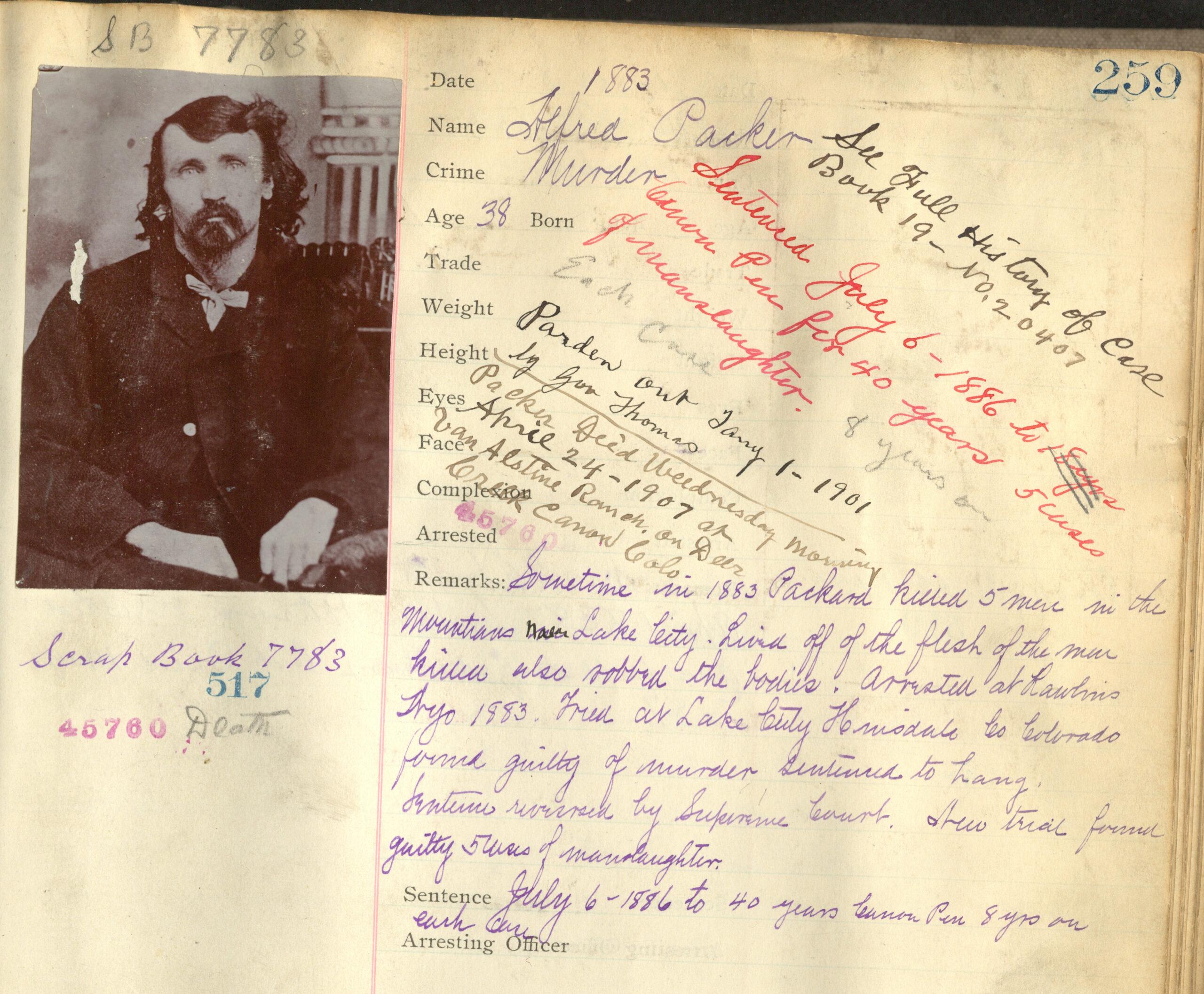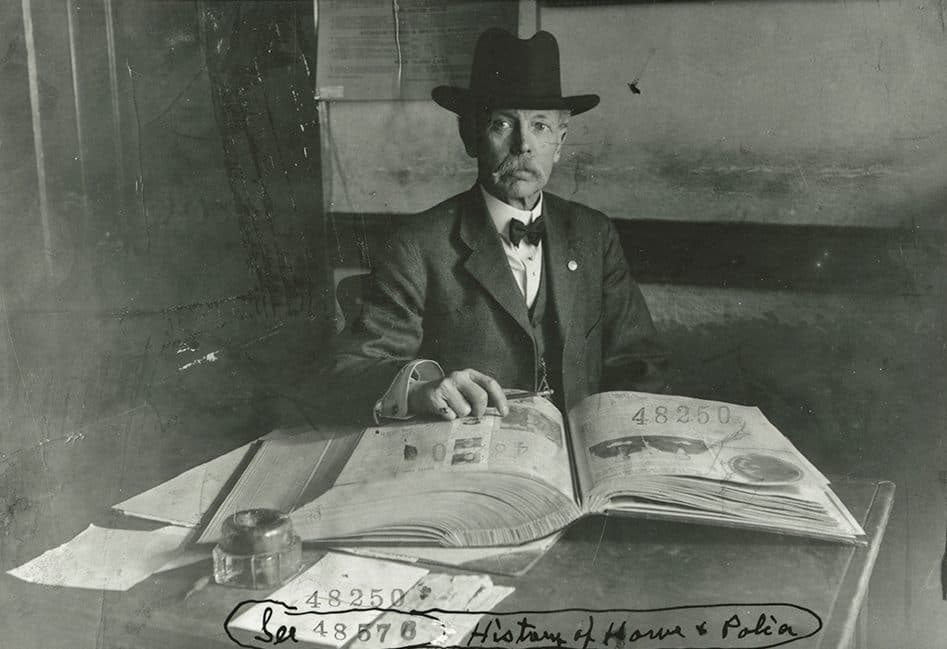History Colorado is in possession of two "murder books," and it wants your help digitizing their contents.
These macabre scrapbooks, created by Sam Howe, one of the city's first detectives, are filled with details about homicides in the city from the late 1860s through the early 1920s.
Although these books were donated by the Denver Police Department (DPD) to History Colorado in 1939, the historical society has lacked the funding to digitize these volumes - until now. In 2022, the organization was awarded a $30,000 state grant for its crime ledger digitization project.
With this money, History Colorado is finally able to invest in the preservation of Howe's collection and it's inviting Denverites and crime history buffs to help in the effort.
Howe was a meticulous documentarian of crime in the city.
In the mid-1800s, Howe moved to Colorado and began work as a marshal. When the Denver Police Department (DPD) was formed in 1859, he became one of the city's first detectives. This is when he started his archival project.
Over his six-decade career with DPD, he meticulously documented the city's criminal activities. By the time he left the force, his legacy included 73 books, each containing an estimated 800 criminal cases. He documented roughly 58,400 records. Many of his volumes documented petty crimes and misdemeanors. But two of his books were dedicated to murders.

In the murder books, Howe collected clippings and photographs. He wrote detailed notes about suspects' names, ages, physical descriptions, and crimes, as well as records about arresting officers, victims, and trials. For each clipping he cut and pasted, he assigned the artifact a number that indicated the type of criminal activity. He then created detailed indexes. Due to his exemplary record-keeping, everything can be cross-referenced between cases and indexes, allowing readers to search the books by type of crime, criminal, and so forth.
Howe left the force in the early 1920s and, for a short while, DPD continued creating criminal scrapbooks. But as record-keeping practices advanced, this aging method was laid to rest.
In 1939, the DPD donated Howe's ledgers to History Colorado. Since then, these valuable resources have been in storage.
According to History Colorado's Melissa de Bie, director of curatorial services and collections access, these pages hold "so much research potential with policing and law enforcement." They could also allow researchers to analyze "socio-economic history and the history of immigration" in Denver, she added.
But right now, the books are "largely inaccessible due to condition and size," says de Bie. The larger of the two murder books is eight to nine inches thick, and both ledgers are deteriorating.
De Bie laments, "every time they're being used, they're being damaged."

This is why History Colorado is on a mission to digitize the records and create a searchable, online database that can be accessed without harming the physical source materials.
"We want collections to have relevance and purpose and be used," de Bie explains. This begins with archivists scanning the pages, which they're doing now. Once they're finished, volunteers will be called upon to transcribe the information on each page, turning the images into text-readable files that can be accessed worldwide.
Although the History Colorado team has an inkling of what's in these books, there's so much yet to be discovered. "There are articles about the Titanic," de Bie said, and Alfred Packer, the Colorado Cannibal who admitted to eating people in 1873, shows up, too.
"There are a couple of the bigger names, but we haven't really gone through in detail," she explains. Right now, "the focus is really on scanning. Then we can focus on telling the stories."
"Each item has to be transcribed three times," de Bie explains. "This seems to be a good number for us to get accurate information." Once three people have transcribed a page, "we'll take the data and we'll go through it, there's a protocol to check the quality, and then we'll add it to our database."
If each of the two murder books has roughly 800 cases, that's a total of 1,600 unique cases. Then, if each of those 1,600 cases needs to be transcribed three times for accuracy, that's 4,800 transcriptions.

Here's how you can help History Colorado in its push to preserve Howe's work.
History Colorado's only requirement for volunteering to transcribe Howe's murder books is an ability to read cursive.
Many volunteers are individuals - from all around the world - who want to help digitize records and make them available for research. Others are part of school groups or universities. Sometimes, transcription projects are used in classrooms to teach students cursive. Other times, students and teachers use transcription projects to fulfill service learning requirements.
Because these volunteer opportunities are unbound by age, location, or other criteria, they have helped History Colorado " branch out and diversify the folks who are working with (the) collections," de Bie said. For this particular collection, "sometimes there's graphic imagery...or offensive language that they used at the time," de Bie cautions, adding that "we're not condoning that, but we don't want it to surprise anybody."
However, the historical society does not want to "limit who has access," so it is not placing any age requirements on the project, it is simply offering a content warning.
"I'm super excited that we're able to get this out," de Bie delights, "It's fascinating to see the volunteers interact in collections."If you'd like to get involved, click here to apply.














